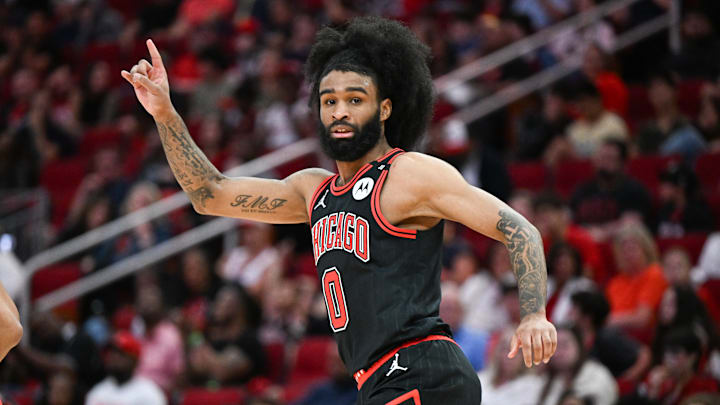The Chicago Bulls’ 2024-25 season was a mix of future excitement and frustration, pairing a high-powered offense with stretches of defensive inconsistency. As the team heads into the 2025-26 season, several statistical trends from last year might hint at how the team will perform throughout the 2025-26 season. Among them, one stands above the rest: the team’s pace, which helped shape nearly every aspect of their game.
Pushing the pace
The Bulls operated at a relentless tempo last season, ranking second in the league in pace behind only the Memphis Grizzlies. With a pace of 102.82, this means the Bulls averaged just over 102 possessions per 48 minutes, allowing the team to thrive in a transition-heavy offense, also finishing in the top three for fast break points per game at 18.4.
An aggressive pace can be draining, especially on the defensive side of the ball. But with one of the youngest rosters in the league, averaging 25.14 years old, Chicago was well-positioned to take advantage of its youthful energy. Now, entering the 2025-26 season, the Bulls have trimmed nearly a year off their average age, sitting at 24.44. This suggests they could play even faster, potentially making their offense more powerful than ever.
Pace and Space Offense
Last season’s offense was centered around spacing, perimeter shooting, and transition opportunities. The Bulls ranked 2nd in three-point attempts per game and 3rd in three-pointers made, reflecting Billy Donovan’s commitment to stretching the floor and creating open looks near the rim.
However, this heavy reliance on jump shots came with a major downside. Chicago attempted the second-fewest free throws per game in the league. In an era where drawing fouls is crucial, the Bulls must generate more opportunities at the line if they want to compete. And if you're a team shooting nearly 81 percent from the charity stripe (3rd best in the NBA), you have to be capitalizing on getting to the rim and drawing fouls more often.
Defensive Inconsistency
Defensively, the Bulls were one of the most confusing teams in the league. Their perimeter defense was elite, allowing the third-lowest three-point percentage in the league at 34.4 percent, thanks to quick closeouts and sharp rotations. Additionally, they mightily excelled on the glass, ranking first in defensive rebounds per game (35.7) and second in defensive rebounds allowed.
Despite this, the Bulls still gave up the 3rd most points per game, highlighting struggles protecting the paint and defending in the half-court. Improving interior defense will be essential, and the addition of Essengue should help address this weakness.
Path to Major Improvement
The Bulls’ front office and coaching staff have clearly targeted the major issues surrounding free-throw rate and interior defense by selecting Noa Essengue in this year’s draft. Essengue’s ability to draw fouls and force turnovers addresses these needs almost perfectly. Last season overseas, he averaged 5.6 free throw attempts and 1.2 steals per game, numbers that should translate immediately to the NBA.
For Chicago to truly build a contending core, they will also need to address age disparities on the roster. Nikola Vucevic and Jevon Carter are the only players over 30, and moving on from them could accelerate the team’s development and maximize its potential right away.
